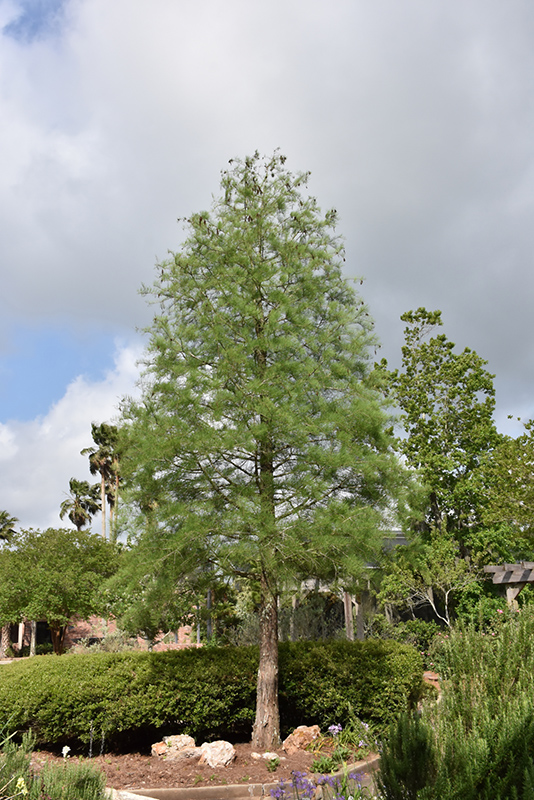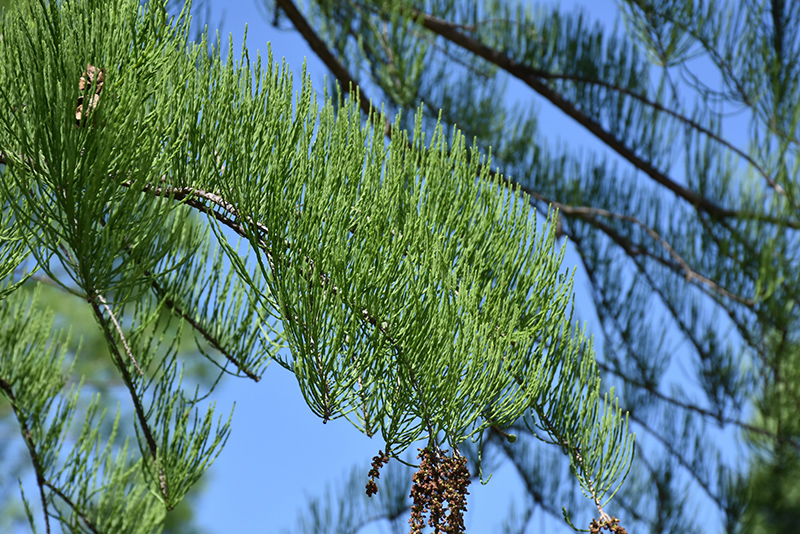>> Home
Height: 70 feet
Spread: 20 feet
Sunlight:
![]()
Hardiness Zone: 5
Description:
A narrowly pyramidal deciduous conifer characteristic of the South but actually quite hardy; narrow, awl shaped bright green leaves turn coppery brown in fall, a broad trunk and occasional knee-like protrusions at the base when grown in standing water
Ornamental Features
Pond Cypress is primarily valued in the landscape for its rigidly columnar form. It has attractive emerald green deciduous foliage which emerges lime green in spring. The ferny bipinnately compound leaves are highly ornamental and turn an outstanding coppery-bronze in the fall. The shaggy antique red bark adds an interesting dimension to the landscape.
Landscape Attributes
Pond Cypress is a deciduous tree with a strong central leader and a narrowly upright and columnar growth habit. It lends an extremely fine and delicate texture to the landscape composition which can make it a great accent feature on this basis alone.
This is a relatively low maintenance tree, and is best pruned in late winter once the threat of extreme cold has passed. Deer don't particularly care for this plant and will usually leave it alone in favor of tastier treats. It has no significant negative characteristics.
Pond Cypress is recommended for the following landscape applications;
- Shade
- Vertical Accent
Planting & Growing
Pond Cypress will grow to be about 70 feet tall at maturity, with a spread of 20 feet. It has a high canopy with a typical clearance of 7 feet from the ground, and should not be planted underneath power lines. As it matures, the lower branches of this tree can be strategically removed to create a high enough canopy to support unobstructed human traffic underneath. It grows at a medium rate, and under ideal conditions can be expected to live for 80 years or more.
This tree should only be grown in full sunlight. It is an amazingly adaptable plant, tolerating both dry conditions and even some standing water. It may require supplemental watering during periods of drought or extended heat. It is not particular as to soil type, but has a definite preference for acidic soils, and is subject to chlorosis (yellowing) of the foliage in alkaline soils. It is somewhat tolerant of urban pollution. Consider applying a thick mulch around the root zone in winter to protect it in exposed locations or colder microclimates. This species is native to parts of North America.

